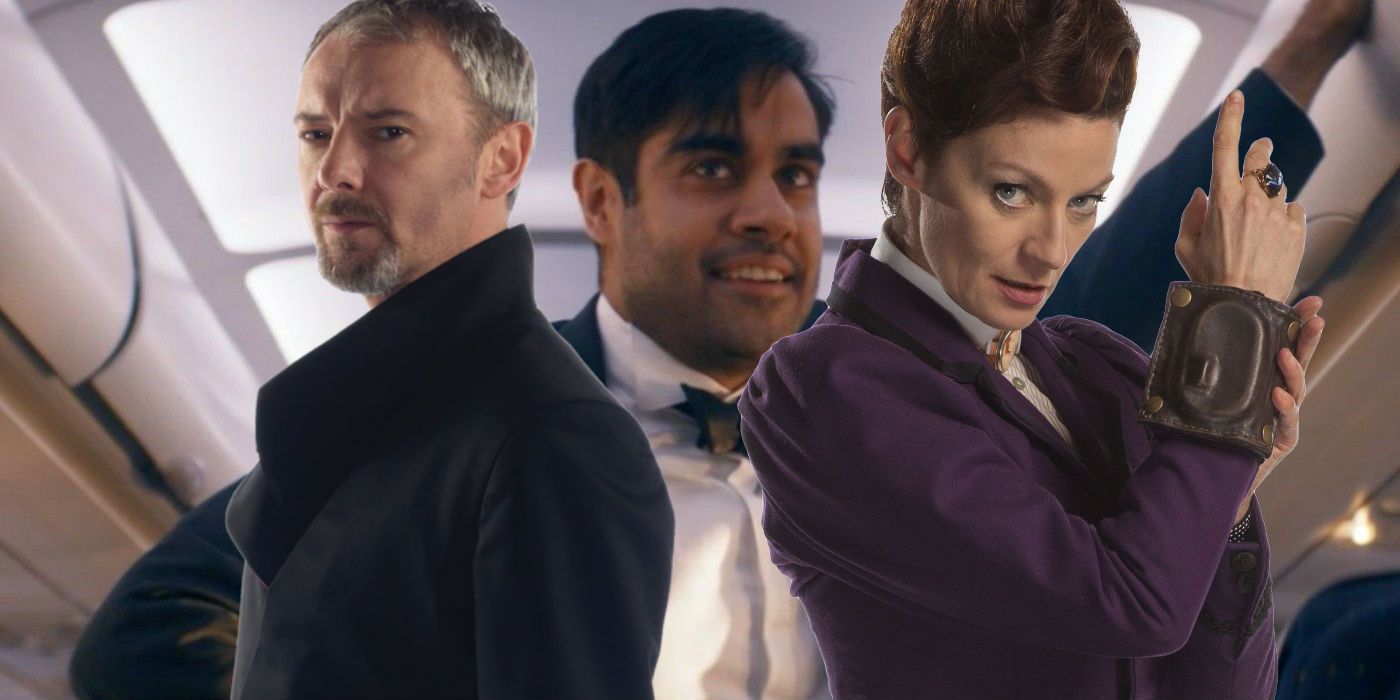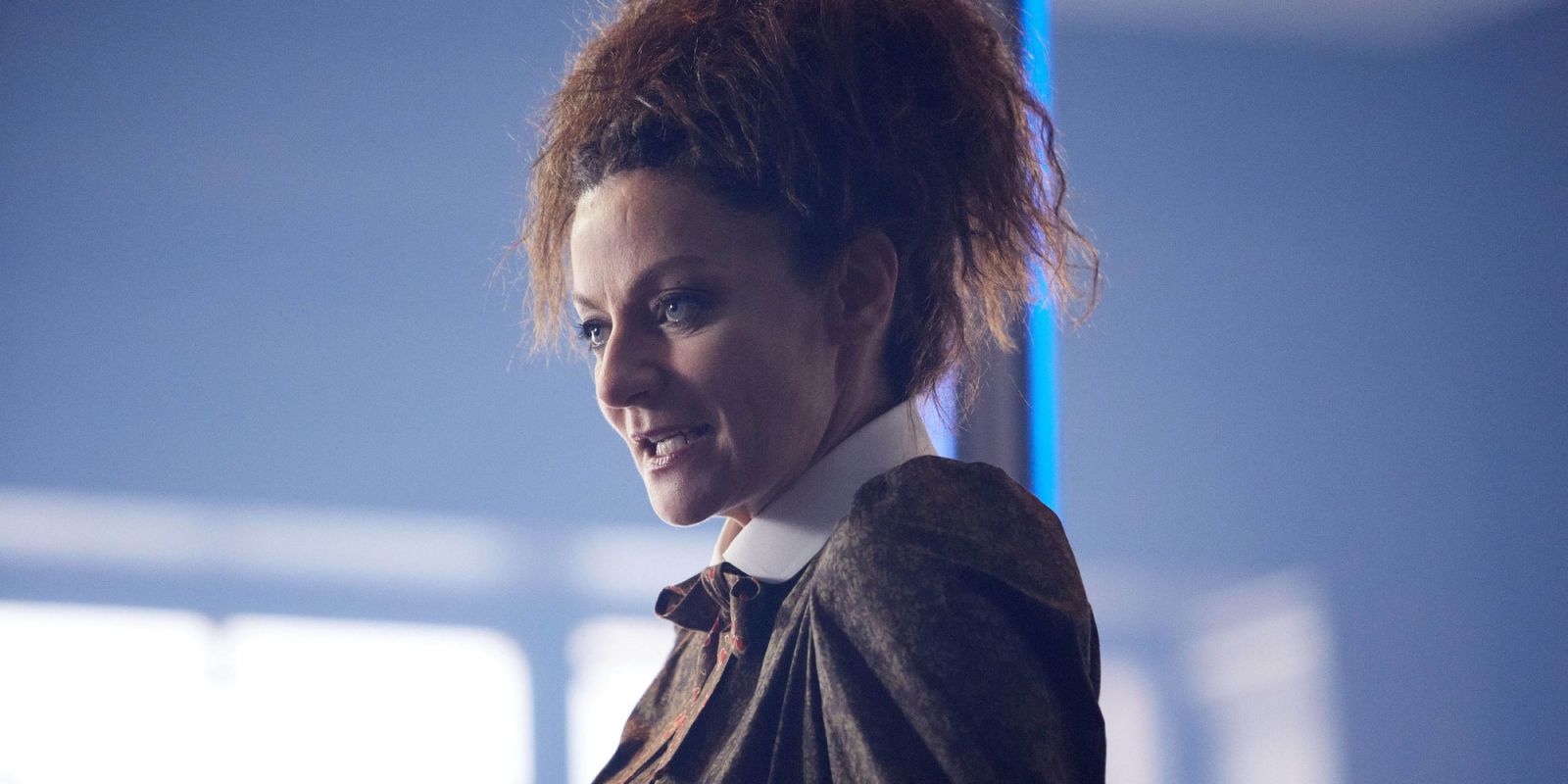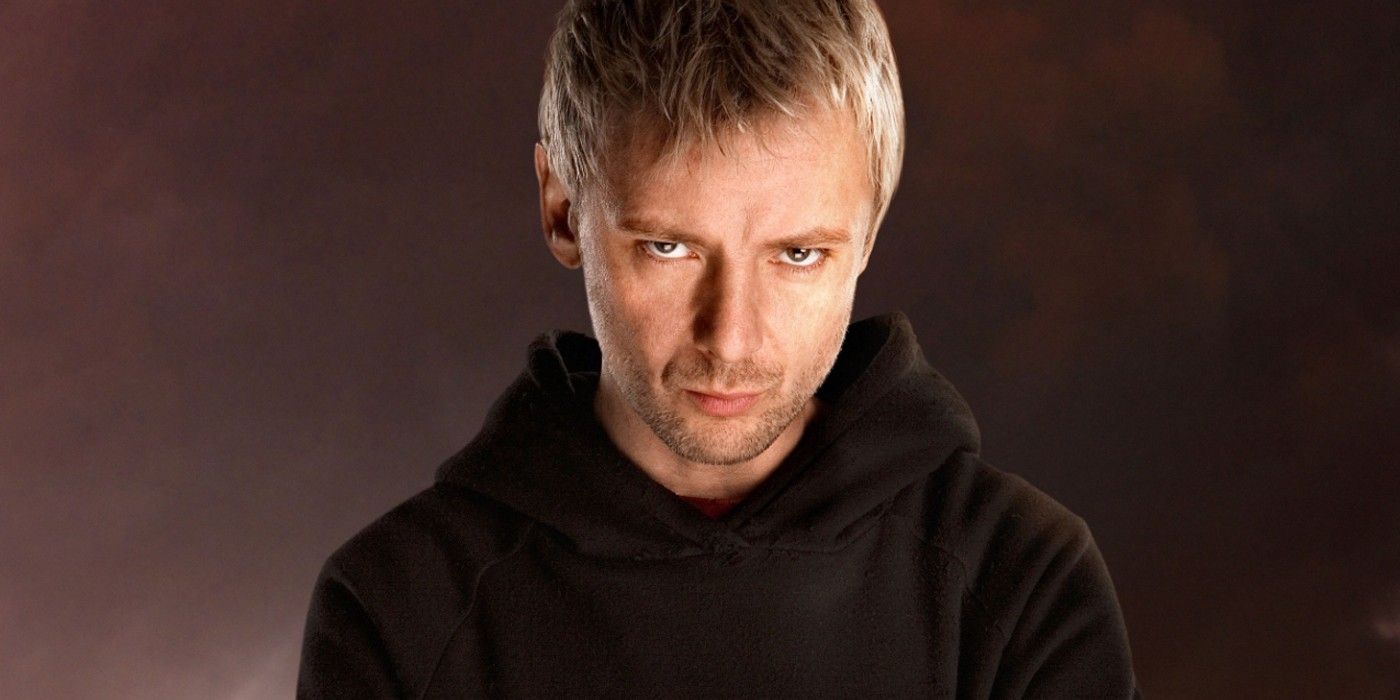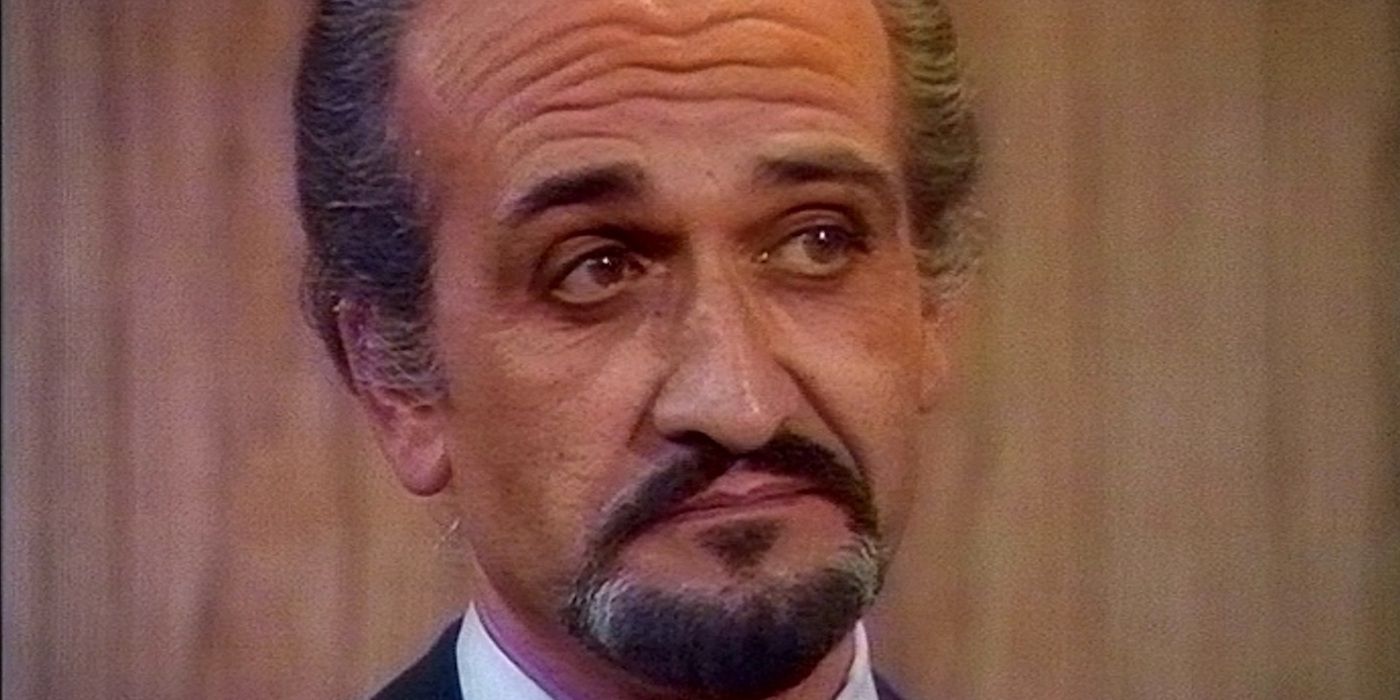How does Sacha Dhawan's new Master stack up against the Doctor Who villain's previous regenerations? After a year off-air, Doctor Who season 12 premiered on New Year's Day with "Spyfall," a James Bond-tinged adventure that saw the Doctor and her companions battling an unknown race of aliens with ominous intentions for the planet Earth. In a stunningly-executed climactic twist, one of the Doctor's new allies revealed themselves to be the Master-mind of the operation.
Originally portrayed by Roger Delgado, the Master has been a recurring villain of Doctor Who and is regularly counted as the best of the show's adversaries. Another renegade Time Lord, the Master is the antithesis of the Doctor; someone who would use their scientific intelligence for evil and self-gain, rather than to help others and explore the universe. The last time fans saw the Master was in the Peter Capaldi-fronted "The Doctor Falls," when John Simm shoots his successor (played by Michelle Gomez) and leaves her to suffer a permanent death.
Much like the Doctor, each regeneration of the Master comes with its own distinct personality traits and idiosyncrasies, and it appears that Sacha Dhawan's character is no different in this regard. Although it's very early days for the new Master, it's already clear from his opening gambit that this version will incorporate elements from past actors, while also embracing some entirely unique quirks and layers. Here's how Dhawan's Master differs from and is similar to his predecessors.
How The New Master Compares To Missy
As Missy, Michelle Gomez was already quite a different Master, not just because of her gender (although that certainly helped mask the deception), but because she and the Twelfth Doctor had a relatively friendly dynamic compared to Doctor Who's history. Although she made her grand return as an outright villain in "Dark Water," the Doctor soon softened on his evil counterpart, first handing her his confessional dial and later sparing her from execution. Missy returns the favor by helping Capaldi's Doctor fight the Cybermen in Twelve's final stand.
This is one quality that Sacha Dhawan's Master has no trace of whatsoever. The new Master is every inch the villain, both in terms of his dastardly plan and his sadistic personality. This incarnation is the beating heart of a conspiracy to turn the universe into lifeless, inhuman husks, but also takes a crazed delight in besting the Doctor, more in line with an uber-intelligent Bond villain than Missy's (mostly) composed and calm Time Lady. It's certainly hard to imagine Dhawan and Whittaker's Doctor making friends any time soon.
With that said, Missy was arguably the kookiest and most light-hearted out of Doctor Who's Masters, and there are already elements of that shining through in Dhawan's performance. The new Master jokingly compares his flying TARDIS to The Wizard of Oz's Wicked Witch and makes a self-aware dig at having a short fuse, both of which are easy enough to imagine Missy uttering in a similar manner.
How The New Master Compare's To John Simm's Harold Saxon
At first glance, John Simm's Master is undoubtedly the most obvious influence on the new model, and there are plenty of moments in Sacha Dhawan's reveal scene that reek of Harold Saxon. As the Doctor's nemesis, Simm was sarcastic, intense, sadistic and intentionally provocative, always going out of his way to worsen the Doctor's humiliation. On several occasions during the closing moments of "Spyfall," the Master breaks out into little dances as his evil machinations reach full flow and these outbursts of joviality are extremely reminiscent of Harold Saxon triggering the Toclafane attack in "The Sound of Drums," playing loud dance music and skipping around the room like a child on a sugar-binge. Both Simm and Dhawan have a gleeful menace when everything is coming up Master.
Also like Simm, the Master's new regeneration clearly enjoys making the extra effort prove his superiority over the Doctor. Saxon's downfall came about because he refused to kill the Tenth Doctor, keeping him as a caged pet instead. Likewise, Dhawan poses as "O" because it's the sound he's expecting the Doctor to make when she uncovers his true identity. The new Master even drops several verbal clues ("Spymaster") and invites her into his home, which appears to double as his TARDIS. Dhawan's Master risks exposing his plans, all for the added pleasure of knowing he outsmarted the Doctor.
Finally, both Simm and Dhawan's Masters have a similar level of villainous intensity. Harold Saxon was always quick to anger, especially when things didn't proceed as planned, or when a victim didn't provide enough entertainment. In much the same way, the new iteration is enraged when Whittaker tries using her sonic screwdriver on a ticking bomb, insulted that she wouldn't realize the Master was too intelligent to not account for that.
How Dhawan's Master Compares To The Classic Series
Although John Simm is perhaps the biggest past ingredient in the new Master's recipe, there's a healthy dose of Roger Delgado and Anthony Ainley on display too. When the Doctor is in denial about the Master's return and drops the traditional "you can't be," the villain retorts, "oh I can be, and very much am." This formal, matter-of-fact delivery is something that might come straight from the lips of Delgado and, intentionally or otherwise, adds an echo of classic Who that hasn't been present in modern Masters.
On a similar ticket, the old guard of Masters were very much set in the classic villain mold, with maniacal laughs, menacing dialogue and very little semblance of virtue. For all his madness, John Simm's Master has been described as overly silly by long-time Doctor Who fans, and much more of an eccentric showman than the original varieties. Although there's plenty of this still present in Dhawan's performance, the quirkiness has been toned down somewhat, leaving more moments that feel like pure, traditional bad guy fare, such as the crazed laughter and the parting gloat.
Perhaps the obvious parallel between the new Master and the originals, however, is the episode's tone and plot. The classic Masters were experts of disguise, but this quality has been used sparingly in modern Who, with Professor Yana and Razor the only notable examples. The new Master, however, disguises himself as an MI6 agent, aligns with an influential figure on Earth and some would-be alien invaders, and uses Tissue Compression to shrink his enemies. The entire scenario comes straight from the Delgado playbook and, as an added bonus, the spy-centric action themes of the episode also hark back to the era of Jon Pertwee's Third Doctor.
-
Although there's plenty in Sacha Dhawan's early scenes to compare to past actors, there's also ample freshness. All of the classic elements are certainly there, but there's a rage and swagger that are very much Dhawan's own, and the clowning around is less the prideful grandstanding of Simm's Master and more of a charismatic arrogance. Or maybe that was just the bow tie.
Doctor Who continues with "Spyfall Part 2" January 5th on BBC and BBC America.




